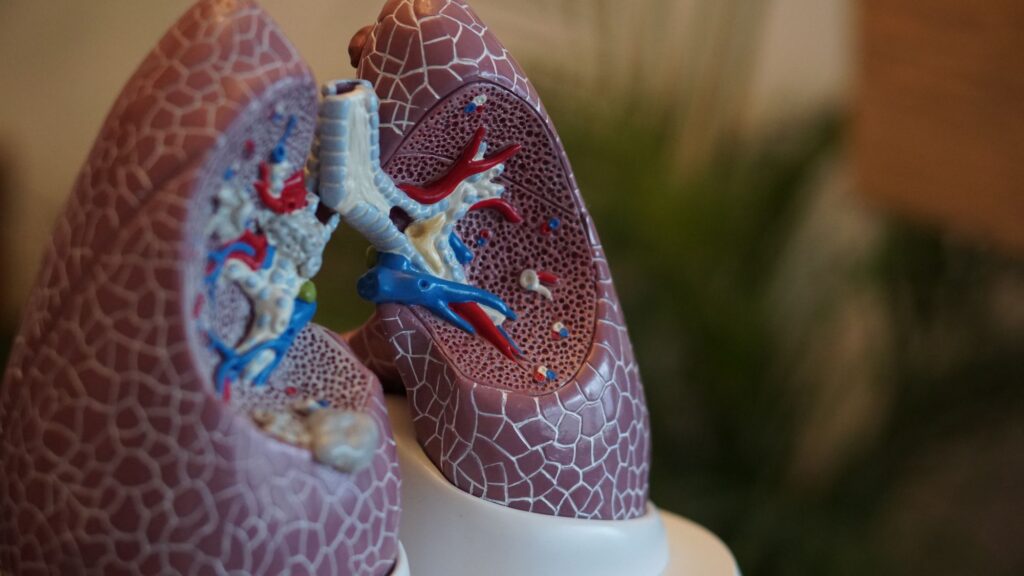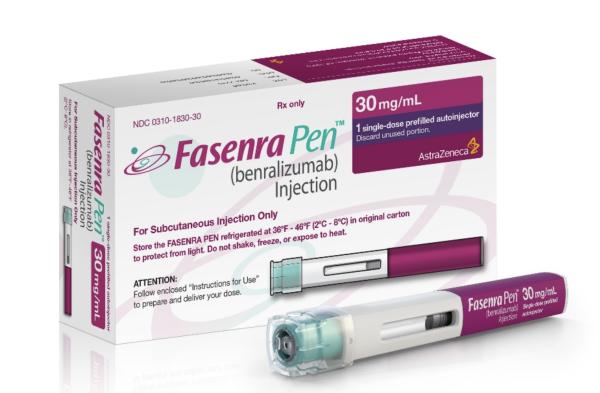Fasenra is a drug that is used to treat psoriasis. It belongs to a class of medications called immunomodulators, which work by slowing down the immune system and reducing the number of skin cells that are affected by psoriasis.
Fasenra may cause joint pain. This side effect is more common with higher doses of Fasenra. The most common joints affected include the knees, ankles, wrists, hands and fingers. Joint pain may begin within a few days after starting Fasenra treatment or as late as one year after beginning treatment.
If you experience joint pain while taking Fasenra, contact your doctor immediately because this could indicate a more serious problem such as rheumatoid arthritis or lupus erythematosus (lupus).
Fasenra is a prescription medication that is used to treat rheumatoid arthritis. It is a type of biologic medication, meaning it is made from living organisms.
Fasenra can cause joint pain in some patients, but this side effect can be managed with medication or other treatments.
This article will discuss the causes and treatment of Fasenra-induced joint pain.
What Is Fasenra?
Fasenra (fass-uh-RAR) is an injectable medication used to treat moderate to severe rheumatoid arthritis (RA), an autoimmune disease that causes inflammation in joints and other tissues throughout the body. RA patients often experience severe pain, stiffness, and swelling in their hands, wrists, elbows, knees and ankles.
Fasenra belongs to a class of biologics known as tumor necrosis factor (TNF) blockers, which work by decreasing the amount of TNF protein in the body. This protein plays a role in most inflammatory diseases including RA, psoriasis and Crohn’s disease.
What is the side effects of Fasenra?
The most common side effects with Fasenra include:
Fever, chills, or flu-like symptoms.
Skin problems that may include redness, itching, peeling, or swelling of the skin.
Serious side effects are rare. Your healthcare provider may prescribe a different medication if you have an allergic reaction to Fasenra.
The most common side effects of Fasenra include eye pain, swelling or itching around the eyes and nose, and skin reactions. These are usually mild to moderate and go away quickly.
Other side effects may include:
Eye pain
Swelling or itching around the eyes and nose
Skin reactions such as rash, redness, swelling or itching of the skin over an extended period of time (more than 1 week)
Does Fasenra cause osteoporosis?

The short answer is no, Fasenra does not cause osteoporosis.
Fasenra is a drug that works to inhibit the immune system by targeting and destroying white blood cells. The drug is designed to prevent rejection of transplanted organs, but it has also been used to treat rheumatoid arthritis and other autoimmune diseases.
Osteoporosis occurs when there is a loss of bone mass due to decreased bone formation or increased bone resorption. This condition can cause bones to become weak and more likely to fracture.
In general, people with osteoporosis have low levels of certain hormones called estrogen, vitamin D, and parathyroid hormone (PTH). These hormones help regulate the body’s ability to absorb calcium from food and use it for strong bones. When these hormones become low or stop working properly, less calcium is absorbed into the bloodstream, which causes bones to weaken over time.
There is no information on the use of Fasenra in patients with osteoporosis.
If you have osteoporosis, you should consult your doctor before using this product.
Yes, Fasenra (fasudil hydrochloride) can cause osteoporosis.
Fasenra is a medication used to treat high blood pressure and other conditions. This medication comes in tablet form and is taken by mouth. Side effects of Fasenra may include:
Diarrhea
Nausea
Vomiting
The use of Fasenra in the treatment of osteoporosis has not been studied. As well, there are no published data on the use of fasenra for osteoporosis.
Does Fasenra reduce inflammation?
Fasenra is a prescription medication that is used to treat eye inflammation. It belongs to a group of drugs called non-steroidal anti-inflammatory drugs (NSAIDs).
Fasenra works by stopping the production of substances in the body that cause pain and swelling. This can help reduce the symptoms of eye inflammation.
The most common side effect of Fasenra is a burning sensation in the eyes. Other possible side effects include blurred vision, headache, rash, dizziness and nausea.
Fasenra® is a prescription medicine that contains the active ingredient fexofenadine. Fexofenadine is an antihistamine that works by blocking the action of histamine, which helps to control allergy symptoms.
Fasenra was approved by the U.S. Food and Drug Administration (FDA) in 2004 for the treatment of seasonal allergies in adults and children aged 6 years and older. The safety and efficacy of Fasenra have not been established in children younger than 6 years or in pregnant women or nursing mothers
The most common side effects that occur with Fasenra include:
Dry mouth
Nausea
Headache
Does Fasenra lower immunity?

The main function of Fasenra is to lower immunity. The drug itself does not cause any side effects, but it can interact with other drugs or conditions to cause side effects.
Fasenra lowers immunity by inhibiting the production of antibodies, which fight off infections. By preventing antibodies from being produced, Fasenra can reduce the body’s ability to fight off infections such as colds and flu.
Fasenra is an immunosuppressive drug used in organ transplantation. It is a calcineurin inhibitor, which means that it suppresses the activity of T lymphocytes and natural killer cells.
Fasenra has been associated with a low risk of opportunistic infections, but other infections such as pneumonia may be more common.
Fasenra can also cause nausea, vomiting and diarrhea. It should not be taken by people with kidney disease or liver disease because it can increase levels of bilirubin in the blood making them more likely to develop jaundice (yellowing of skin).
Fasenra is usually given every day for the first three weeks after surgery and then once every week for six months after surgery.
Some side effects may not show up until several days or weeks after treatment begins.
Yes. FASENRA is a prescription medicine that can lower the ability of the immune system to fight infections and may increase the risk of getting serious infections or an infection that could be life threatening. The most common side effects are swelling, pain, warmth or redness at the injection site.
If you develop any of these symptoms, contact your doctor immediately:
Fever over 101°F (38°C)
Swelling in one or both feet/ankles
Painful urination
The side effects of Fasenra are not very common, but they do occur. The most common side effects are nausea, vomiting, diarrhea and abdominal pain.
The most serious potential side effect of Fasenra is infection with the fungus Candida species. This is more likely to occur in people who have had a previous infection with the fungus and in those who have been taking antibiotics recently.
Other possible side effects include:
fever;
redness, swelling, or pain at the injection site;
headache; or
joint pain (arthralgia).
What happens if you stop Fasenra?
The most common side effects of Fasenra are nausea, vomiting and diarrhea. These side effects usually go away after the first few doses.
If you stop taking Fasenra, the virus will come back in about 3 weeks. You will need to take Fasenra every day for the rest of your life to keep the virus from coming back.
If you want to stop taking Fasenra, you should do it under medical supervision. The drug should be discontinued gradually to avoid withdrawal reactions.
Fasenra should not be taken with other drugs that are used to treat psoriasis (isotretinoin or etanercept).
The most common side effects of Fasenra are headache, nausea, vomiting, diarrhea and abdominal pain. Less common side effects include leg pain, joint pain and muscle pain. Serious side effects include severe skin reactions such as Stevens-Johnson syndrome (SJS) and toxic epidermal necrolysis (TEN), which may be fatal if not treated promptly.
How do you know if Fasenra is working?

How do you know if Fasenra is working? Fasenra is a prescription medication used to treat psoriasis and psoriatic arthritis. It is also used to help slow the progression of chronic plaque psoriasis in patients who are at high risk for developing skin cancer.
A doctor will prescribe Fasenra only after he or she considers all other treatment options and has determined that Fasenra is appropriate for your condition.
Fasenra may take several weeks or months before you notice any improvement in your symptoms. If your condition does not respond well, it is important that you talk with your doctor about other treatment options available.
How do you know if Fasenra is working?
Fasenra is a prescription medication that contains two active ingredients: fexofenadine (antihistamine) and pseudoephedrine (decongestant). It’s used to treat symptoms of seasonal allergies in adults and children 6 years of age and older.
Fasenra comes in tablet form, which is taken orally with water. The recommended dose is one tablet every 24 hours. The dose may be increased to two tablets per day if needed.
The most common side effects of Fasenra include drowsiness, dry mouth, headache, dizziness and fatigue. These side effects are usually mild to moderate and should go away as your body adjusts to the medicine.
When Fasenra is working, you may notice the following:
You have more energy. You may feel less tired during the day and have more stamina for activities that used to be difficult or painful.
You are more comfortable. You may find that your joints don’t hurt as much and that you can move around more easily.
Your pain level is reduced. Your body will feel less stiff and your joints will not hurt as much.
Your mood improves. You may feel happier and less depressed because you are in less pain and moving around more easily.
If you’ve been diagnosed with celiac disease, the answer is simple: you’ll know it’s working when you start feeling better.
If you have non-celiac gluten sensitivity (NCGS), it’s trickier to know if Fasenra is working. That’s because there’s no test for NCGS — just a diagnosis based on your symptoms and a medical history that shows no other cause for them.
That means it’s up to you to decide whether or not the supplement is working for you. Here are some ways to tell:
You feel better after eating gluten. If you’re taking Fasenra, eating gluten shouldn’t make you feel worse or cause any symptoms at all. If it does, that’s a sign that Fasenra isn’t helping your body fight off the immune response caused by gluten.
You notice an improvement in how long it takes for symptoms to go away after eating gluten-containing foods. If your symptoms resolve more quickly than they did before taking Fasenra, that’s another sign that Fasenra is working as intended by helping your body fight off the immune response caused by gluten.
